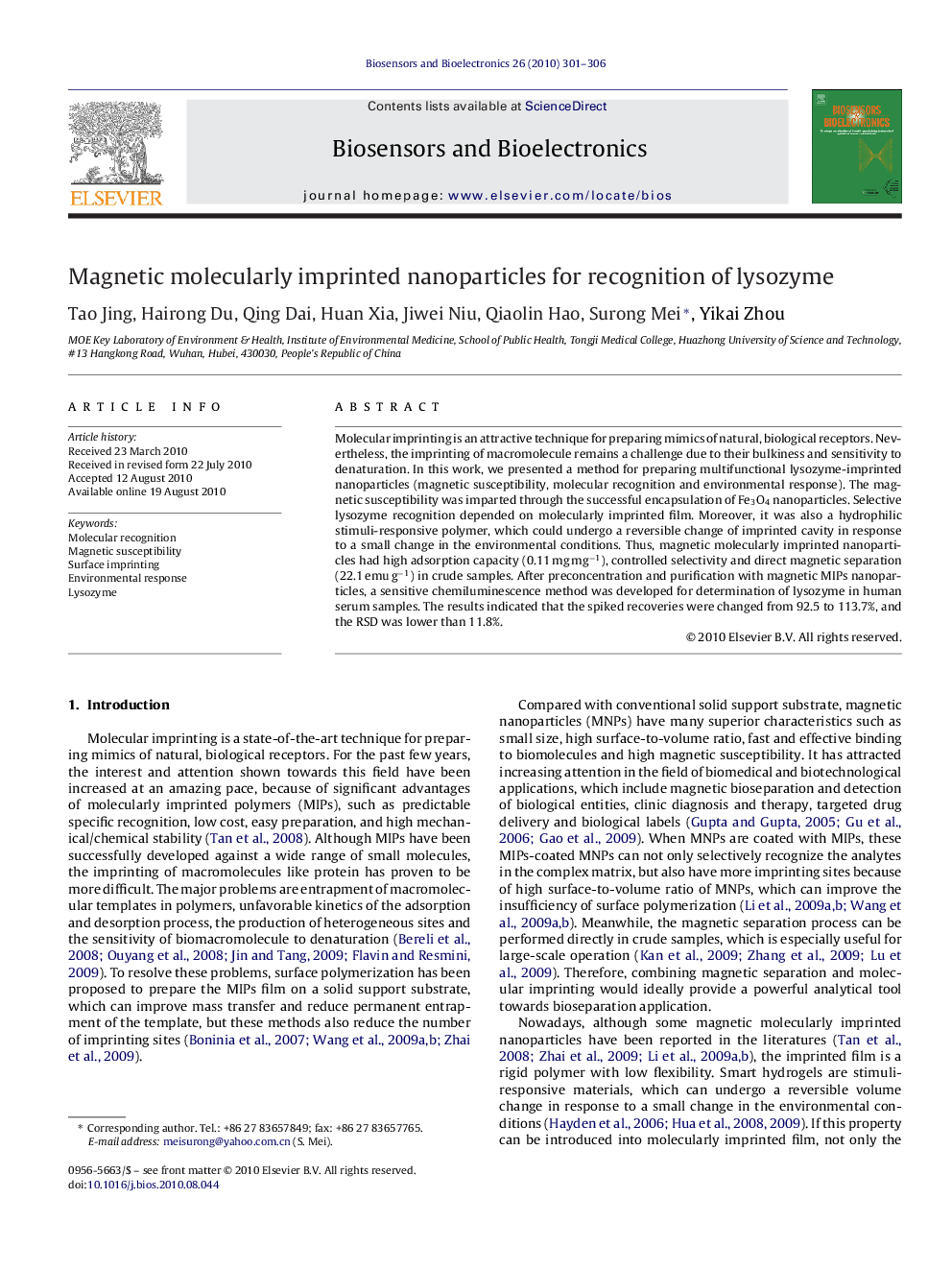| Article ID | Journal | Published Year | Pages | File Type |
|---|---|---|---|---|
| 868532 | Biosensors and Bioelectronics | 2010 | 6 Pages |
Molecular imprinting is an attractive technique for preparing mimics of natural, biological receptors. Nevertheless, the imprinting of macromolecule remains a challenge due to their bulkiness and sensitivity to denaturation. In this work, we presented a method for preparing multifunctional lysozyme-imprinted nanoparticles (magnetic susceptibility, molecular recognition and environmental response). The magnetic susceptibility was imparted through the successful encapsulation of Fe3O4 nanoparticles. Selective lysozyme recognition depended on molecularly imprinted film. Moreover, it was also a hydrophilic stimuli-responsive polymer, which could undergo a reversible change of imprinted cavity in response to a small change in the environmental conditions. Thus, magnetic molecularly imprinted nanoparticles had high adsorption capacity (0.11 mg mg−1), controlled selectivity and direct magnetic separation (22.1 emu g−1) in crude samples. After preconcentration and purification with magnetic MIPs nanoparticles, a sensitive chemiluminescence method was developed for determination of lysozyme in human serum samples. The results indicated that the spiked recoveries were changed from 92.5 to 113.7%, and the RSD was lower than 11.8%.
